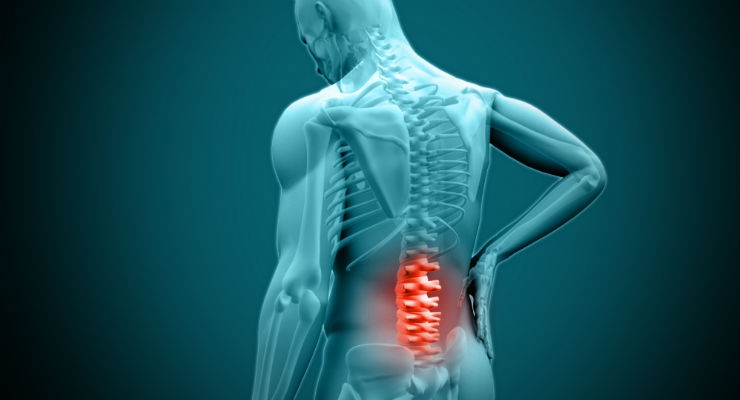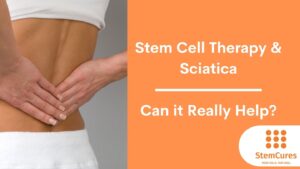Why Consider Stem Cell Therapy for Disc Degeneration Disease?
You could work an office job where forward head-posture is caused by increased screen time. On the other end of the spectrum, you might frequently perform heavy-duty physical labor, putting an immeasurable toll on your spine.
Whether inactive or highly active, you’re at risk of disc degeneration, as it’s a condition that comes from all directions.
It’s worth noting other factors – such as a cigarette habit or a slip-and-fall hernia exacerbate these problems. Yet, for many people, disc degeneration disease (DDD) stems from their everyday life–no significant traumas or bad habits are required.
To the above point, disc degeneration affects 40% of people over 40.
Still, just because DDD is common doesn’t mean the pain is something you should accept. Nor does it have to be permanent.
In fact, there are better methods than ever to successfully manage your DDD. Namely, injecting bone marrow stem cells into degenerating discs can offset or even reverse degeneration.
What to Know About Disc Degeneration Diagnosis
Here’s a list of radiographic findings associated with a disc degeneration disease (DDD) diagnosis:
- Disc space narrowing
- Fusion of adjacent vertebral bodies
- Displaced vertebral bodies
- Bone spurs start at the affected vertebral bodies
The grading process for DDD, known as the Pfirrmann scale, comes from MRIs. It starts from grade I for healthy, down to grade V: a dehydrated disc and almost entirely collapsed back.
What Are More Standard Treatments for Disc Generation?
When patients deal with disc pain, medical professionals might suggest the following treatments and approaches:
- Core muscle strengthening
- Physiotherapy
- Stretching
- Anti-inflammatory medication
- Pain killers
- Mesotherapy (including back muscle injections)
Why Aren’t They Ideal?
While these methods are prescribed to manage pain and enhance spinal biomechanics, they’re not much more than band-aid solutions. They generally don’t reverse or put a stop to disc degeneration.
Unfortunately, surgery might be mandatory when these less invasive treatment options don’t offset the pain in 3 months, especially when the legs experience numbness and weakness. These symptoms suggest irreversible nerve damage.
Patients with nerve damage frequently undergo a discectomy, a surgery that might remove all the damaged intervertebral disc or parts of it.
There’s also the potential for spinal fusion, specifically with inflammatory changes in the adjacent vertebral bodies caused by DDD. This procedure removes the entire intervertebral disc and stabilizes the affected spinal segment.
Spinal fusions are a last resort and cause permanent impairment to your spinal biomechanics. More specifically, they cause the adjacent segments in a patient’s spine to go through secondary degeneration.
The many pitfalls involved in these treatments beg the question: is there another way to treat DDD?
The answer is “yes,” and it revolves around using stem cell therapy for disc degeneration.
The Science Behind Bone Marrow Stem Cell Therapy for Disc Degeneration Disease
The number of clinical trials and preclinical research proving the effectiveness of stem cell injections for DDD keeps growing.
First, a 2019 entry in the Journal of Spine surgery claims stem cell injections are a viable alternative to conservative treatments and surgeries. According to the report, these injections stop and reverse dis generation for a sustained period.
Furthermore, Cedar-Sinai Medical Center put forth a 2012 review citing that injecting bone marrow stem cells resulted in disc improvements in function and morphology.
A 2017 clinical trial also showed that stem cell therapy for disc degeneration disease improved the condition significantly. To that point, only 23% of patients receiving these treatments needed surgery after 36 months. Subjects also reported a significant decrease in pain, dropping from “intense, horrible, and dreadful” to “mild and annoying” during the treatment period.
Beyond that, nobody’s condition worsened during the 2017 clinical trial due to the injections, proving them entirely safe.
What to Consider with Stem Cell Therapy for Disc Degeneration Disease
Stem cell injections are only as effective as the practitioner providing them and the environment in which they occur.
For one, diagnostic work must be performed by experienced physicians, ensuring its precision. Also, stem cell products must be of high quality. Plus, there must be pinpoint-accurate guidance of the injections into the inner core of the disc.
Sterile conditions are required as well, as they prevent infections.
As a patient, perform due diligence on clinics and their procedures so you have peace of mind knowing your treatments will be safe and effective. Be mindful that stem cells injected blindly or guided by X-ray fluoroscopy can cause adverse results, such as nerve damage and infection.
Closing Thoughts
Conservative treatment approaches have proven ineffective over the long term in treating DDD. Whereas spinal surgeries are invasive and might do more damage to your spine over time.
Stem cells provide a happy medium being minimally invasive while showing superior results to more traditional non-invasive approaches. In this stem cell therapist’s opinion, these injections are the wave of the future in spinal medicine.













